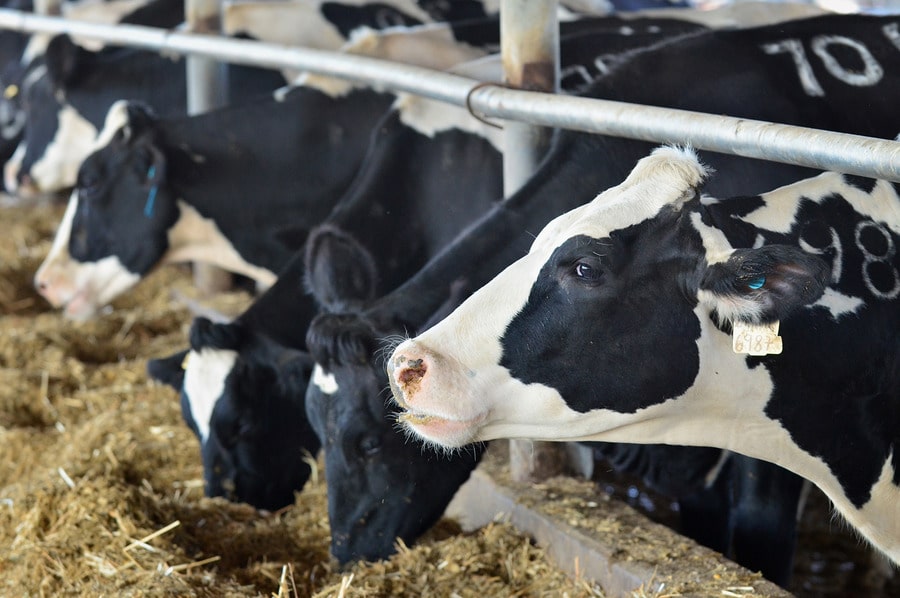The future of the feed additive industry is bright with many new technologies, and one of the most prominent is the plant active or molecule sector. Essential oils and plant extracts have been of interest for several decades but high price and general lack of efficacy limited implementation. Greater understanding of specific molecules within the essential oils and plant extracts allows development of synergistic combinations at economic pricing. In cooperation with a leading partner in the plant active sector, Agrarian Solutions has introduced the LivOx combination as an exciting enhancement to our mycotoxin mitigation program.
The cell wall-deficient bacteria (CWDB) technology in DTX focuses on protecting the animal against mycotoxins by interacting with the intestinal epithelial cells to enhance inherent mycotoxin defenses. The CWDB technology is now complemented by the plant actives curcumin, naringin, and carnosic acid to further aid in protection against and resolving mycotoxin-related inflammation and restoring liver function.
The powerful research behind the LivOx combination started in rodents (Gladine et. al, 2007), chicks (Zhang et. al, 2016), and sheep (Gladine et. al, 2007) and found conclusively that curcumin, naringin, and carnosic acid were present in the plasma and liver in each experiment. Other molecules used in these studies did not pass this test and the researchers were unable to detect the other molecules in body tissues.
With the absorption test completed, the body of research behind curcumin, naringin, and carnosic acid sought to measure the impact of these plant actives on the animal. This research verified that the three plant actives increased the antioxidant status of the animals, whether it was sheep challenged with a pro-oxidant diet (Gladin et. al., 2007), fresh dairy cows (Michelotti et. al., 2021), or small chicks (Zhang et. al., 2016).
What intrigued Agrarian the most was the research proving the efficacy of these plant actives in dairy cattle during their most challenging time – the fresh period. These cows can succumb to the typical transition cow diseases such as metritis, mastitis, ketosis, and rumen upsets. It is our role as nutritionists and researchers to support the cow during this time and increase her capacity to manage her environment. Several studies have fed these plant actives to transition cows and seen positive responses.
Michelotti et. al., 2021, gave fresh dairy cows a pulse dose of carnosic acid via IV for the first three days after calving. The cows that received carnosic acid made 6.3kg/d more ECM than cows that received the saline control. The cows that received carnosic acid also had reduced inflammation after calving shown by a lower inflammatory markers in their blood stream. Carnosic acid infusion after calving likely helped the cows better manage their immune system and inflammation, reducing the nutrient draw to the immune system and increasing milk yield.
Naringin is an important component of the plant active mixture because it increases the bioavailability of curcumin, but it also has some antioxidant benefits itself. Li et. al. (2024) measured the impact of feeding naringin to cows before and after calving on fat mobilization and ketosis, as well as inflammation. Cows fed naringin had increased milk yield of 3.7kg/d and reduced fat mobilization, leading to a healthier metabolic response and reduced inflammation.
Two weeks before calving and one week after calving cow were fed the three plant actives, curcumin, naringin, and carnosic acid together in a study by Kumprechtova et. al. (2022). A novel finding of this study was the measurement of uterine involution and recovery post-calving. Cows fed the plant active mix had significantly faster postpartum recovery shown by reduced uterine contents and better uterine tone 10 days after calving. Concurrently, the cows fed the plant actives had decreased inflammation, better liver health, and healthier metabolic status.
The choice to enhance DTX with the plant actives curcumin, naringin, and carnosic acid was not taken lightly. Agrarian Solutions is proud of the body of research behind the plant actives and will continue to be a leader in mycotoxin protection.
Caroline Knoblock, MSc, – Director of Nutrition, Agrarian Solutions and Larry Roth, Ph.D., PAS – Vice President of Nutrition


